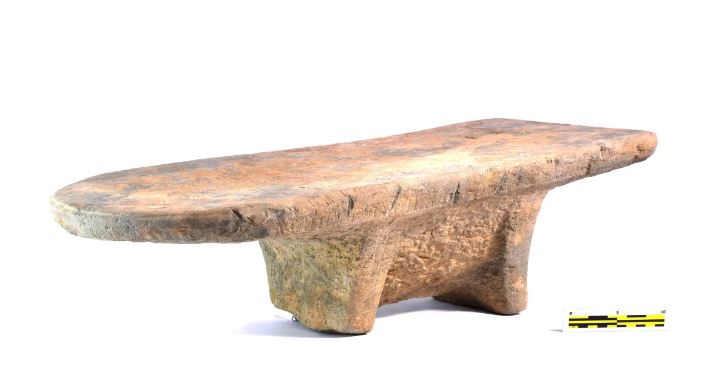
Oil-Producing States Dominate as FAAC Disburses ₦4.43tn to 36 States
Nigeria’s 36 states shared a total of ₦4.43 trillion from the Federation Account Allocation Committee (FAAC) between January and July 2025, with oil-producing states taking the lion’s share — about 35% of total disbursements.
According to data from the National Bureau of Statistics (NBS) and FAAC reports, Delta State received the highest allocation of ₦361.23 billion, followed by Rivers (₦301.18 billion), Lagos (₦279.03 billion), Akwa Ibom (₦278.11 billion), and Bayelsa (₦274.81 billion).
Collectively, these five states accounted for nearly one-third of total allocations to all states in the seven-month period.
At the lower end of the list were Ekiti (₦70.83 billion) and Ogun (₦67.20 billion) — the least recipients among the 36 states.
Oil Revenue Remains Nigeria’s Fiscal Lifeline
The dominance of oil-rich states in FAAC distribution highlights Nigeria’s persistent dependence on petroleum earnings for government revenue.
The 13% derivation principle, which allocates a portion of oil and gas revenue directly to producing states, continues to benefit states like Delta, Rivers, and Bayelsa, keeping them ahead in monthly federal allocations.
Analysts note that Delta’s huge receipts are largely driven by derivation payments, rather than internally generated revenue (IGR). Similarly, Rivers and Akwa Ibom have benefited significantly from derivation inflows and Value Added Tax (VAT) revenues linked to industrial activity within their territories.
Lagos Tops Among Non-Oil States
Lagos State, Nigeria’s commercial hub, stood out as the highest-earning non-oil state, receiving ₦279.03 billion during the period.
Most of its FAAC revenue came from VAT and statutory allocations, complementing its robust IGR base of over ₦400 billion annually.
Economist Dr. Muda Yusuf, CEO of the Centre for the Promotion of Private Enterprise (CPPE), said Lagos demonstrates the rewards of economic diversification.
“Fiscal independence and competitiveness are achievable through strategic investments in infrastructure, urban productivity, and governance efficiency,” Yusuf explained.
Northern States Receive Lower Allocations
Despite their large populations, northern states received relatively smaller shares of FAAC funds.
Kano, the most populous state in the North, ranked sixth with ₦149.81 billion, followed by Borno (₦110.00 billion), Katsina (₦109.31 billion), and Jigawa (₦106.87 billion) — all far below their oil-producing counterparts.
Analysts have warned that this fiscal imbalance could worsen as government implements new revenue and subsidy reforms.
“The FAAC formula largely rewards resource control rather than fiscal efficiency,” said Barrister Ralph Udo, Principal Partner at Ralph Udo Chambers.
“Until states embrace fiscal intelligence, grow IGR, and reduce waste, Nigeria will remain trapped in a rent-sharing economy.”
Middle Belt and Southeast See Moderate Allocations
In the Middle Belt, states such as Benue (₦104.58 billion), Niger (₦97.38 billion), and Kogi (₦95.20 billion) received mid-level allocations — supported by revenues from agriculture and solid minerals.
Meanwhile, Anambra (₦111.85 billion), Abia (₦98.12 billion), and Enugu (₦92.71 billion) led among Southeastern states, though their allocations remain modest compared to the South-South.
Experts say this underlines the need for greater fiscal decentralization and improved local revenue generation in the region.
Calls Grow for Fiscal Restructuring
The latest FAAC data has reignited debate over fiscal federalism and Nigeria’s heavy reliance on central allocations.
Critics argue that the current revenue-sharing model discourages states from building independent, productive economies.
“Most states behave like administrative outposts rather than economic entities,” said Chief Blakey Ijezie, Convener of the Blakey National Tax Conference.
Analysts from BudgIT Foundation also warned that true fiscal stability will depend on how effectively states manage and expand their economies.
“Nigeria’s fiscal future depends not on how much FAAC shares, but on how efficiently states utilize and grow their revenues,” the foundation stated.
Path to Sustainable Subnational Economies
Experts believe that allowing states to retain a greater share of locally generated revenues would encourage competition, innovation, and accountability — key ingredients for long-term development.
To achieve sustainable subnational economies, states must diversify their revenue sources, strengthen governance, and reduce dependency on federal allocations.
About Author
Discover more from BillionBill
Subscribe to get the latest posts sent to your email.


